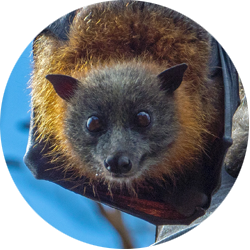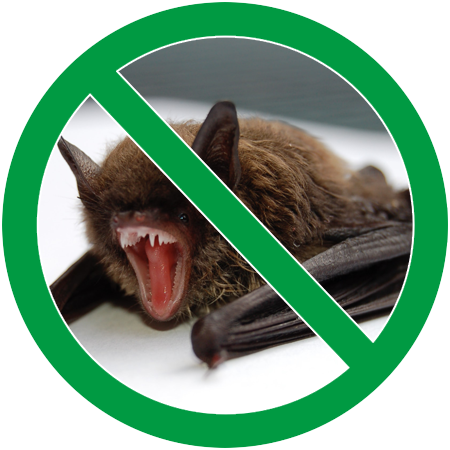Did you know that the world contains more than 1,000 species of bats? The world is full of bats, and for the most part they'd all love a chance to live in your attic: it's dry, dark, secure, and warm—an ideal habitat for bat roosting! Once inside an attic, bats reproduce quickly to establish colonies. Bats are not bad; they can consume up to 3,000 mosquitoes a night, which we can be thankful for! But despite being beneficial for the environment, a bat infestation in the home can pose a serious problem to homeowners. Besides the eerie scratching throughout the night, bats will destroy your attic insulation. Guano, or bat droppings, is also hazardous to human health due to a fungus spore causing histoplasmosis. And usually by the time you realize bats are present they've already established a colony. Amateurs should not attempt to remove bats, as it can be dangerous for an untrained individual. Bats are carriers of several diseases and parasites such as mites,fleas, ticks, and more.
Bats In the Attic?

Bat Eviction and Clean Up
The specialists at Northern Pest have the experience, tools, and protective gear to safely remove bats from your premises. We remove bats through a specialized process using exclusion valves. After a thorough inspection to identify entry points, we attach check valves over those areas, which allow bats to exit but prevent their return. Once the colony has wholly vacated, the valves are removed, and the entry points are sealed up to prohibit re-entry. After the bat eviction, the cleanup process can begin. Our restoration team removes the guano and materials contaminated by it, disinfects affected areas, replaces materials such as flooring or drywall, and installs new insulation. By the time we are done, we make sure your attic is like new!
We are often asked if our eviction process kills the bats. Northern Pest understands the role bats play in the ecosystem. Bat extermination is not an ethical process, and bats are a protected species. Our bat eviction process is humane, geared towards getting the bats to leave on their own and preventing their reentry. Our process preserves the bat colony intact; we just give them a boot to encourage them to relocate elsewhere. To learn more about bat conservation, visit the website of Bat Conservation International or the Bat Association of Michigan State University.
Have Bat Issues, Get Help Now



